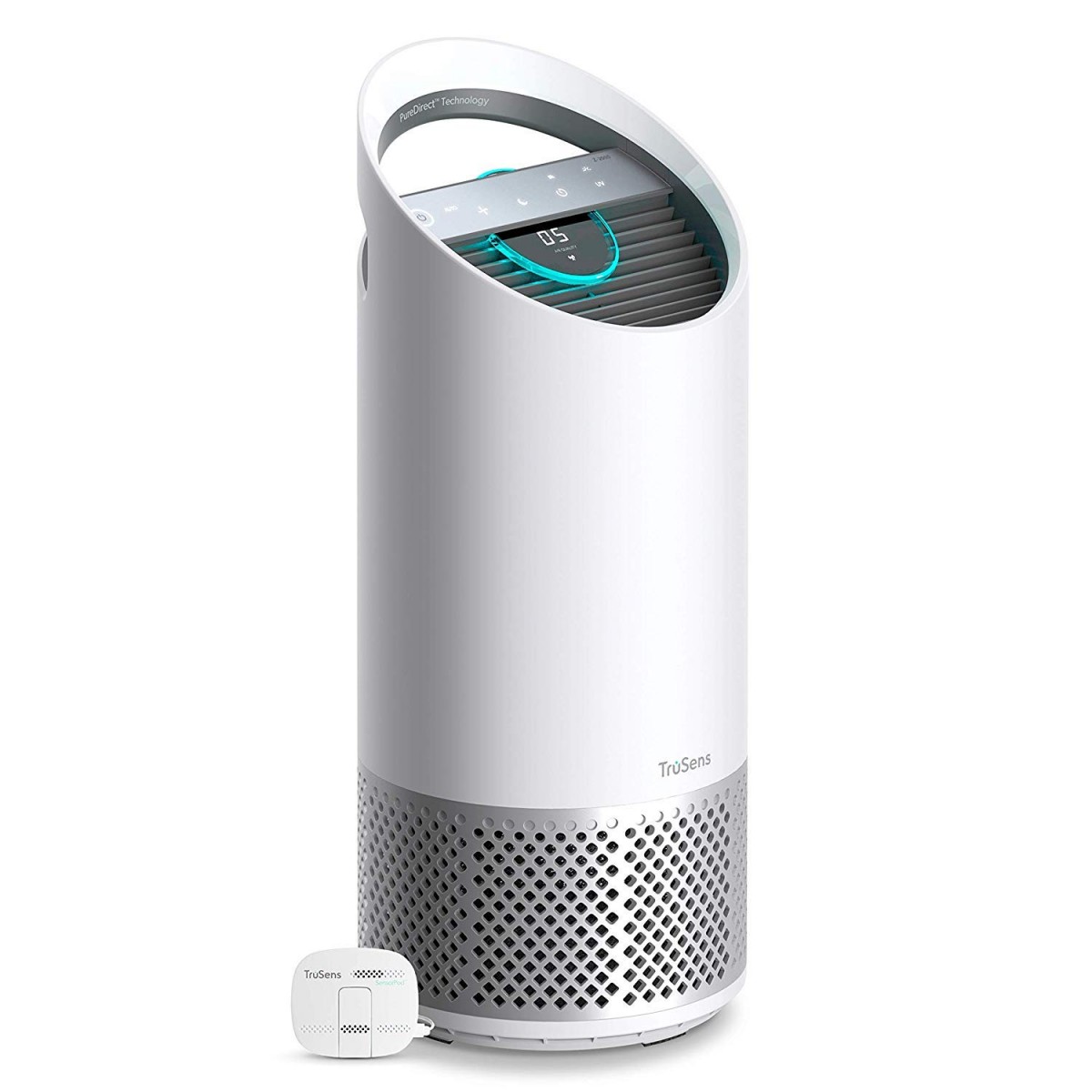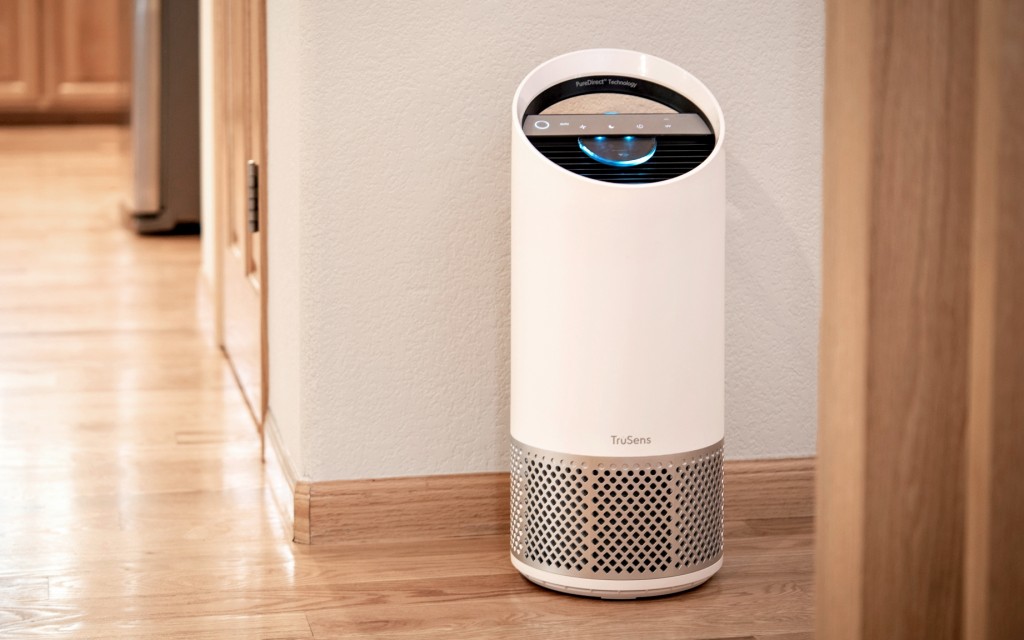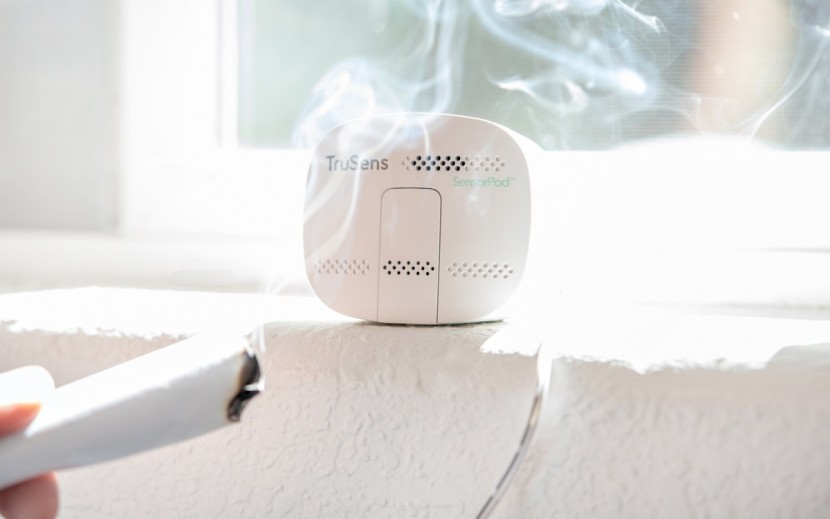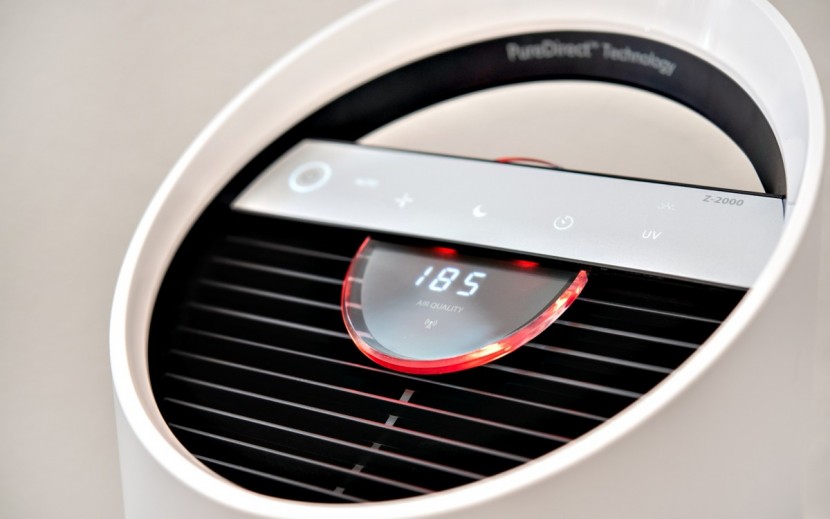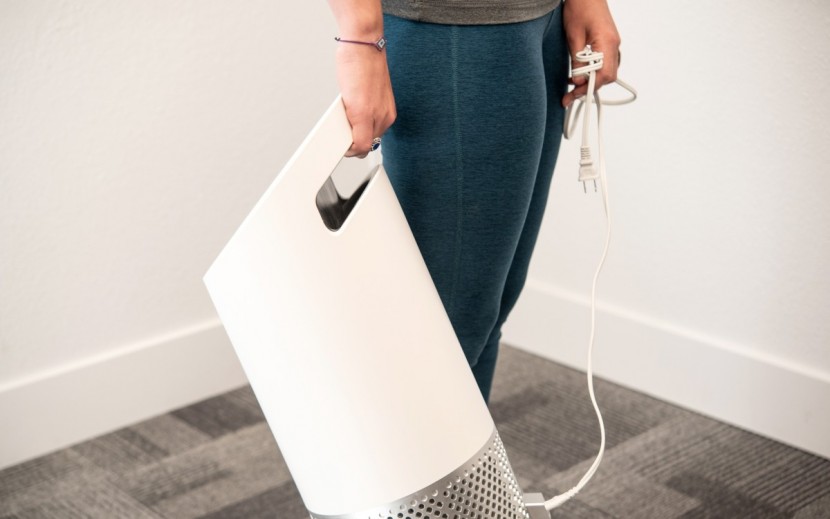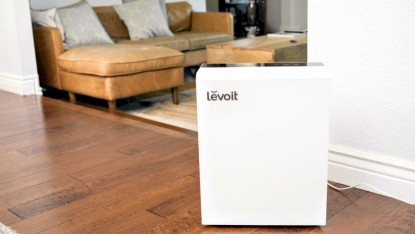TruSens Z-2000 Review
Our Verdict
Our Analysis and Test Results
Air Cleaning Performance
The TruSens performed well in this metric. After just half an hour in our smoky testing room, it removed an impressive 98.15% of the airborne particulates sized 2.5 microns or larger. After one hour, that reduction in airborne particles was nearly complete, reaching a level of 99.85%. Though none of the purifiers we tested were particularly proficient at reducing the smoky odor in our testing room, the Z-2000 was one of the better models. The room smelled noticeably less pungent at the end of the hour, though the smoke smell was still readily apparent.
We didn't award the Z-2000 a top score in this metric because it doesn't have a clean air delivery rate (CADR) rating from the Association of Home Appliance Manufacturers (AHAM). CADR allows you to judge how large of a room the purifier can handle and is one of the few truly comparable certifications awarded to consumer-level air purifiers. The Z-2000 claims it can handle rooms of up to 375 square feet, which would imply a CADR of 250, but that number has not been certified by AHAM.
Air Quality Sensor Pod
Many purifiers have air quality sensors and a corresponding auto mode that allows the purifier to ramp up and down in response to its senses. The problem with these sensors is that they are almost always located on the purifier itself. The inherent problem here is that the cleanest air in your home will likely be the air right next to your purifier, and that is the air the meter will be measuring. The Z-2000 offers an air quality pod --essentially a separate air quality meter-- that you can place anywhere in your home. Thus you can put the Z-2000 into auto mode and have it react to the air quality right next to your bed or favorite couch instead of the air right next to the purifier itself.
Noise
The Z-2000 is one of our favorite models for those that are sensitive to noise. It has a virtually silent whisper setting, and even its normal low modes barely make any noise. Higher settings are certainly audible, but the pitch stays low and consistent, mostly blending into the background, and actually providing somewhat of a pleasant white noise (if you're into that kind of thing). Even the highest turbo mode stays a lower hum that isn't too grating.
Ease of Use
Of all the purifiers we've tested, the Z-2000 offers one of the best user experiences. From setup to operation, we didn't hit any snags. Setting up the Z-2000 couldn't be easier — unwrap the filters, plop them in, and you're good to go.
Even the air quality sensor pod pairs automatically the minute you plug it in (the pod communicates with the purifier wirelessly but still needs to be plugged into an outlet). The controls are super straightforward, and there is even a color-coded air quality readout shown when using the sensor pod. It offers several different fan settings: an auto mode, two, four, eight, and 12-hour timers, and a quiet night mode.
Weighing only 7.4 pounds and providing a built-in carrying handle, the Z-2000 is also very easy to move from room to room.
Operating Cost
This is the only area where the Z-2000 wasn't a particular standout in our testing. Still, its overall costs are fairly average, and you get great performance in return.
The high list price is where most of the Z-2000's costs lie. Once you make that initial investment, the costs are fairly low: replacement filters average $58 per year, and low energy usage results in an estimated $5.81 of electricity per year of regular use. This combines into an estimated lifetime cost of $597 over an average five-year lifespan.
Value
The Z-2000 certainly isn't the cheapest purifier on the market, but it provides great performance for relatively middle-of-the-road lifetime costs.
Conclusion
The TruSens Z-2000 is a powerful purifier that removes most allergens from the air. If you can stomach the relatively high upfront cost, it is a great tool in the never-ending battle against pollen and pet dander.


